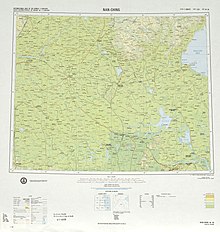Huai-pei
Jump to navigation
Jump to search
English
[edit]
Etymology
[edit]From Mandarin 淮北 (Huáiběi), Wade–Giles romanization: Huai²-pei³.
Proper noun
[edit]Huai-pei
- Alternative form of Huaibei
- 1970, S. A. M. Adshead, The Modernization of the Chinese Salt Administration, 1900-1920[1], Cambridge, Massachusetts: Harvard University Press, →ISBN, →LCCN, →OCLC, page 158:
- Next, at the provincial distributing centers such as Ta-t'ung, Shasi, and Hankow were the important brokers (hang-shang, lit., "guild merchants") or salt hongs, who purhcased the salt for resale, or arranged its resale, to the provincial distributors, who themselves went by a variety of names: in Hupei, p'u-fan (lit., "store merchants") for the urban areas and shui-fan (lit., "water merchants") for the backcountry; in Huai-pei, hu-shang (lit., "lake merchants"); in Szechwan an-shang (lit., "port merchants"). These in turn sold to the public, either through their own shops or through petty retailers and peddlers.
- 2009, Michelle Goldberg, The Means of Reproduction[3], Penguin Press, →ISBN, →OCLC, pages 190–191:
- In the first half of the nineteenth century, Hudson and den Boer write, the Huai-pei region of northeast China had a series of natural disasters.
- 2015, Valerie M. Hudson, The Hillary Doctrine: Sex and American Foreign Policy[4], Columbia University Press, →ISBN, →LCCN, →OCLC, page 81:
- The Nien originally formed during 1851 in the Huai-pei region, as it was known at the time.
- For more quotations using this term, see Citations:Huai-pei.
Translations
[edit]Huaibei — see Huaibei